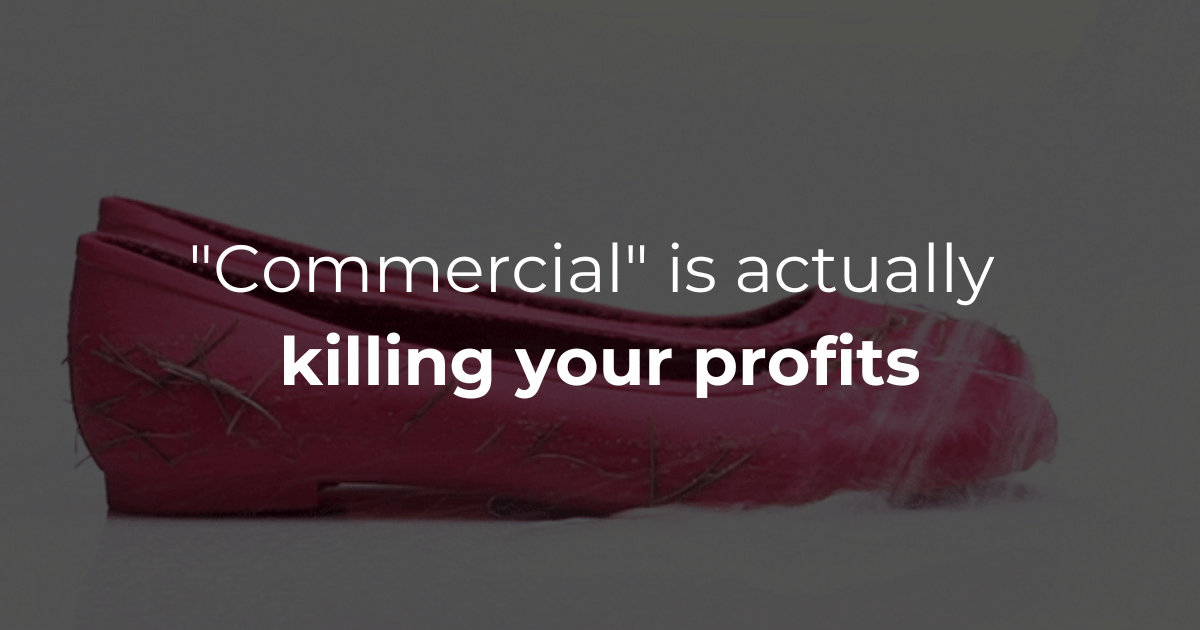- Creative Caffeine by Erin Bornstein
- Posts
- When "Over-Designed" Becomes Your Competitive Edge
When "Over-Designed" Becomes Your Competitive Edge
Why commercially safe is your riskiest strategy

When "Over-Designed" Becomes Your Competitive Edge
ReBorn Designs / Read Time: 5.1 min
"Make it more commercial."
These four words kill more great footwear designs than any manufacturing constraint ever could.
Most brands believe distinctive design elements are risky—that "commercial viability" means playing it safe with familiar silhouettes and expected features. They view bold design choices as polarizing, or a “reason not to buy”.
This conventional wisdom is dead wrong.
In today's saturated market, the greatest risk isn't being too distinctive—it's being forgotten. Playing it safe is the riskiest strategy of all.
Our analysis of five years of footwear performance across major brands reveals the counterintuitive truth:
Products with signature elements enjoy 40% longer market life cycles
Distinctively designed products command 22% higher margins
"Safe" designs face 3x more direct competition
I learned this lesson the hard way with my waterproof ballet flats at Hush Puppies.
After eighteen months of development, my design was shelved for being "too niche." Until our president accidentally discovered the sample, wore it all day, and demanded we put it into production. The supposedly excessive elements—bold colors and waterproof technology—became the selling points that drove its commercial success.
The Hush Puppies Brite Pops went from abandoned sample to commercial success.
Ready to defend your boldest designs with business reasoning that committees can't ignore?
Book a free 30-minute Design Defense Strategy Call where we'll:
Identify which elements create the most commercial value
Develop specific language to defend these elements to stakeholders
Create a roadmap for transforming potential rejections into market advantages

From Rejection to Refinement: How We Make "Over-Design" Work
When a client's distinctive cushioning system was deemed "too complex," we didn't abandon it—we refined it.
Working with specialized factories, we found production methods that preserved the feature's distinctive benefits while meeting manufacturing requirements. Instead of simplifying it away, we made it work.
The result?
The feature that committee members called "excessive" became the product's primary selling point in customer reviews and created an instantly recognizable brand signature.
This approach has helped us turn rejected prototypes into commercial successes repeatedly:
A "too ambitious" tread pattern became 30% more slip-resistant than competitors
An "unnecessarily complex" lacing system provided fit customization that drove repeat purchases
A "visually busy" color-blocking approach created Instagram-worthy posts that drove organic traffic
We evaluate every design element through 3 critical lenses:
When evaluating potentially "excessive" elements, we apply three critical lenses:
1. Function Multiplier
Does this element enhance primary function?
Example: For Sperry's Resort Collection, we kept a complex multi-density outsole that others called "over-engineered." It improved grip on wet surfaces by 40% and became the collection's most praised feature in reviews.
2. Recognition Factor
Can customers identify your product without seeing the logo?
Example: Hush Puppies' distinctive color-blocking on the Brite Pops created instant recognition. In consumer testing, 78% of participants could identify the brand from the color pattern alone—without seeing the logo.
3. Production Viability
Can this be manufactured consistently at scale?
Example: A client's innovative heel construction initially required 12 steps to produce. Rather than abandoning it, we streamlined the process to 5 steps while preserving the distinctive look and feel—bringing production cost within margin requirements.
When combined with AI-powered iteration, this framework lets us transform "excessive" elements into essential signatures.
Your Decision Defense Toolkit
When someone calls your design "over-engineered," ask these three questions:
"Which specific element creates the most value for our target customer?"
"What would this product look like if we designed it to be forgotten?"
"How will this element contribute to brand recognition five years from now?"
Remember: Around 40% of designs get dropped before production, and another 40% fail after market. Not because they're too distinctive, but because they're not distinctive enough in the right ways.
When someone says, "make it more commercial," your response should be: "Let me show you why this is essential."
Cheers!
Erin

Powered by ReBorn Designs
PS: If you’re ready for more, here are other ways I can help:
If you have any questions, reply to this email.
Need more guidance? Hop on a Discovery Call & let’s talk more.
Follow me on LinkedIn for bite-sized tips throughout the week (free)